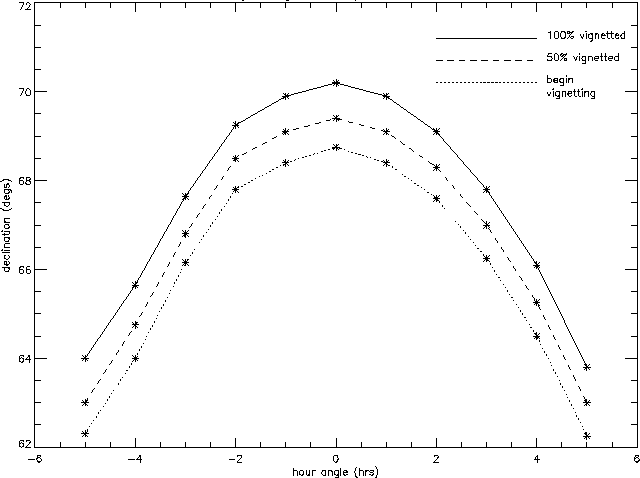
Telescope Limits
Humidity Limits
CAT observers must follow the lead of the 120-inch, i.e., if the 120-inch is closed for humidity, the CAT must also close.*
While the 120-inch telescope operator often remembers to contact the CAT observer in the event that the humidity limit is exceeded, it is the CAT observer's responsibility to monitor the actions upstairs. If humidity is approaching the limit (about 95% R.H.), or if fog is threatening the mountain, the prudent CAT observer will call or visit the 120-inch ROR to remind the 120-inch operator to keep him/her informed of the changing conditions. (CAT observers please note: not only the siderostat, but also the CAT 2nd, 3rd, and 4th mirrors are exposed to outside air and humidity when the telescope is open.)
* Under certain conditions, and at the 120-inch operator's discretion, it may be possible to open the CAT in advance of the 120-inch. Specifically, if the humidity has dropped to safe operating levels and the 120-inch is only remaining closed until the dome has dried sufficiently to prevent water dripping on the 120-inch.
Wind Limits
Wind limits are somewhat problematic with the CAT. Because of its
protected location against the south side of the dome, the area around the
siderostat is often much calmer, particularly in a north wind, than the
condition prevailing for the 120-inch. It is never a mistake for the CAT
observer to follow the lead of the larger telescope in this matter, but,
under certain conditions, and in the absence of blowing dust, it might be
perfectly safe to continue operating the CAT after the 120-inch has
closed for wind. In such a case, it is best to seek the advice of the
120-inch telescope operator.
Pointing Limits
| hour angle limit | 5h
20m Limit may be exceeded with Director's permission. Vignetting by dome imposes parctical limitations, depending on declination. |
|---|---|
| north limit |
+68o 30'
(vignetting by dome begins on meridian)
|
| south limit |
-30o
(begin underfilling primary) -50o (primary 50% illuminated) |
East and west hardware switches prevent accidentally exceeding the hour angle limits. Vignetting by the dome and the grazing angle of incident starlight--with the consequently narrow beam which underfills the primary--impose limits in the north and south, respectively. The hardware switches are occasionally removed by special permission. If the limits have been removed, it is the responsibility of the observer to take extra care insuring the telescope's safety.
The following plot shows vignetting by the 120-inch dome as a function of declination and hour angle.
